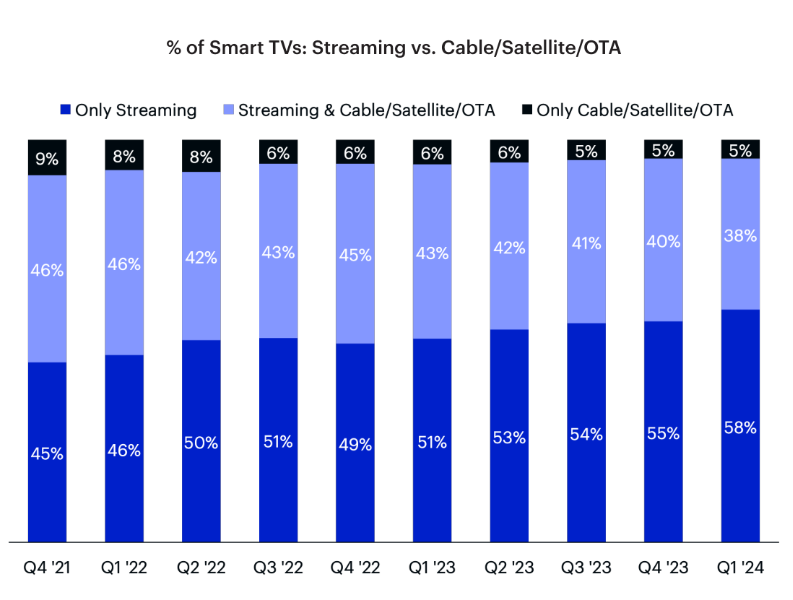As the proliferation of smart TVs continues, it may be that dominating the last yard to the customer through the screen itself carries more value than all the dongles, set-top boxes, and streaming devices combined. That’s part of the reason that many companies not traditionally in the smart TV business such as Comcast, Roku, Amazon have entered the game despite the low or non-existent margins on selling TV hardware.

It’s all about those eyeballs, which is why Walmart is paying $2.3 billion to buy Vizio whose SmartCast UI grants entry to a world of advertising and customer data that the retailer will exploit to sell, sell, sell. Now data from Vizio’s Inscape research unit suggests that the traditional way consumers have used TV screens for decades – watching linear TV – continues to decline, with 58% of the study’s 23 million opted-in Vizio devices now exclusively streaming with no traditional cable/
satellite/over-the-air viewing at all. In addition, 94% of total streaming time came from smart TVs that either only streamed (66.8%) or streamed more than two-thirds of the time (27.1%). One big caveat: These numbers include viewing through virtual MVPDs, which many would argue are mostly indistinguishable from traditional viewing other than the delivery technology. In any event, none of this should surprise anyone. Streaming usage and cord cutting has been on the rise, so of course more viewing time has shifted to streaming, although the study suggests a leveling off recently to around 57%. But the fact that 58% of surveyed TVs are only streaming (up from 46% two years ago) with not even a smidge of traditional TV remains striking. Inscape also found that streaming captures 24.4% of live linear viewing time. So while only 5% of Vizio smart TVs exclusively watch cable/satellite/OTA with no streaming, the study declared that such traditional viewing still remains “crucial for tentpole TV viewing,” with 72.7% and 68.6% of March Madness views occurring on non-
streaming platforms for women’s and men’s games, respectively. Of course, with more and more sports going to streaming platforms, it’s hard to know how long those numbers will hold up.
Next? As TVs increasingly evolve into streaming-only devices, it’s questionable whether the distinction matters anymore. In addition to virtual MVPDs that emulate the traditional cable bundle with perhaps a few more bells and whistles, roughly 1,800 U.S.-based FAST channels counted by One Touch Intelligence’s StreamTRAK® video intelligence service already mimic a linear experience. The only difference is that this new linear universe flows over the Internet rather than a closed QAM- or IP-
based system. And now that every major cable and satellite provider offers a streaming option to replace the traditional set top, it’s clear that consumers don’t care either way. The shortest path to the content will win. And until someone invents a neural link that can stream directly into our brains, the smart TV screen remains the most efficient and direct conduit.
